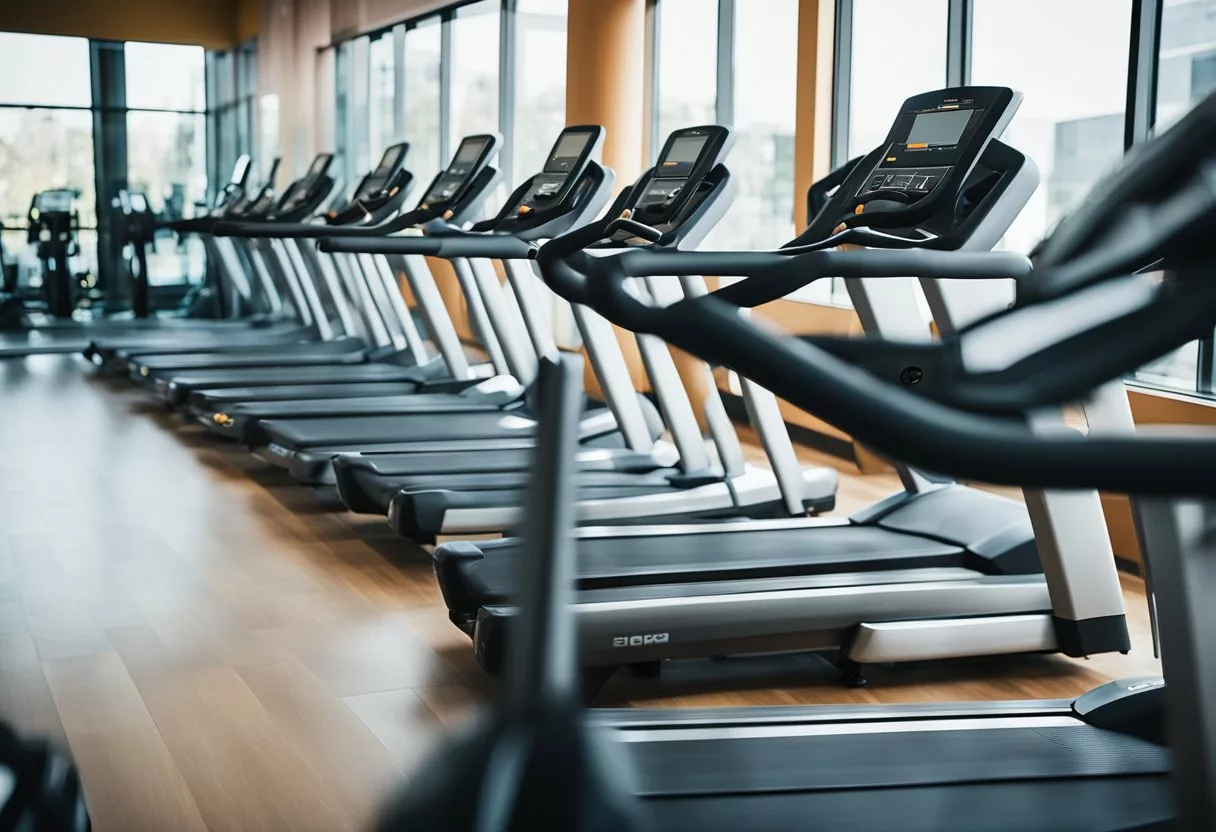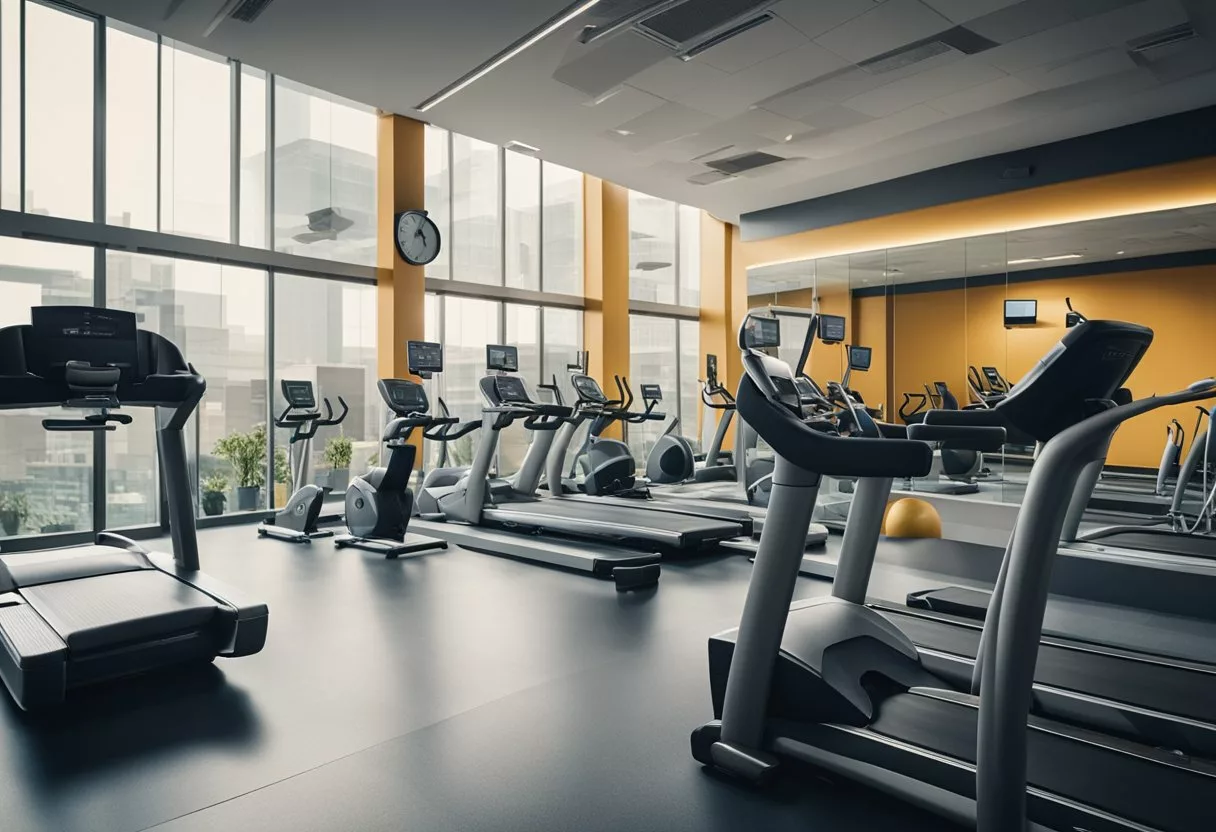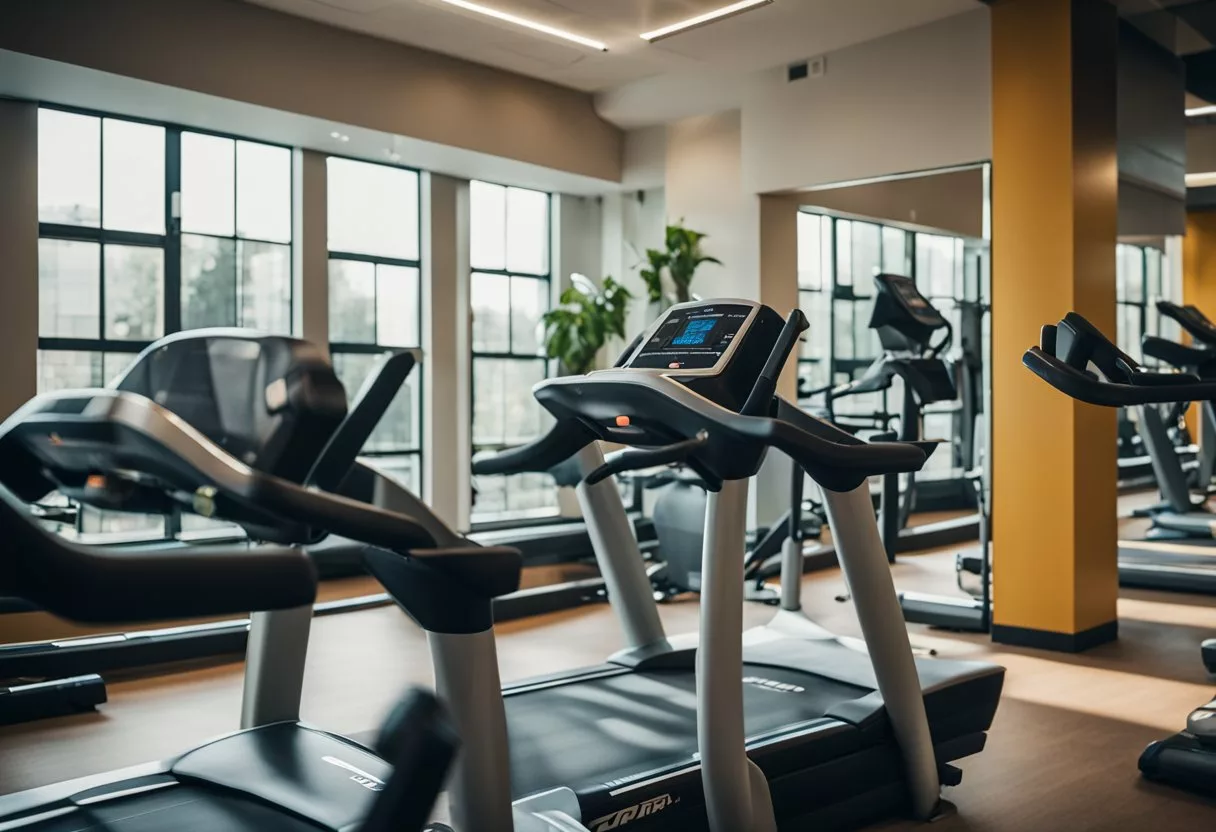Cardio exercises are a crucial part of any fitness routine. They help improve heart health, increase stamina, and burn calories. Understanding the different types of cardio exercises can help you create a balanced and effective workout plan. From running and cycling to swimming and jump rope, each type targets different aspects of cardiovascular fitness, making it easier to meet your health and fitness goals.

For those looking to break a sweat at home, there are plenty of effective cardio exercises that require little to no equipment. Activities like dancing, jumping jacks, and burpees can elevate your heart rate and provide an intense workout session. Mixing these exercises into your routine can keep things fresh and more engaging, helping you stick with your fitness journey.
Don’t forget about the incredible benefits cardio exercises offer beyond physical health. They can elevate your mood and boost overall energy levels. Whether you’re a beginner or a fitness pro, exploring a variety of cardio workouts can ensure your exercise routine remains motivating and beneficial.
Key Takeaways
- Cardio exercises improve heart health and increase stamina.
- Each type of cardio targets different aspects of cardiovascular fitness.
- Home cardio exercises can be effective and require minimal equipment.
Understanding Cardiovascular Exercise

Cardiovascular exercise, also known as cardio, is essential for maintaining a healthy heart, improving endurance, and strengthening muscles. It can be adapted to fit different fitness levels, making it accessible to beginners and advanced athletes alike.
Definition and Importance of Cardio
Cardio refers to exercises that increase your heart rate and breathing. These activities boost the heart’s ability to pump blood and improve the body’s use of oxygen.
Examples of cardio exercises include:
- Running
- Cycling
- Swimming
- Jump roping
These exercises enhance cardiovascular endurance, helping the heart and lungs work more effectively. The American College of Sports Medicine recommends regular cardio to lower the risk of heart disease, improve metabolic health, and aid in weight management.
Incorporating cardio into your routine can also boost mental health by reducing stress and improving mood.
Cardio for Different Fitness Levels
Cardio workouts can be customized for various fitness levels. Beginners might start with low-impact activities like walking or incline walking, which are gentler on the joints but still raise the heart rate.
For individuals with moderate fitness, moderate-intensity workouts such as jogging or trampoline-ing can be effective. Jumping on a trampoline can be a fun way to increase heart rate and build endurance.
Advanced exercisers may opt for high-intensity cardio, such as running, cycling at high speeds, or performing interval training. These activities provide a more significant challenge and can substantially improve cardiovascular strength and overall endurance.
Tailoring the intensity ensures everyone, regardless of their fitness level, can benefit from cardiovascular exercise.
Types of Cardio Exercises

Cardio exercises come in various forms and can be categorized based on intensity and specific activities. These exercises help improve cardiovascular health, burn calories, and boost overall fitness.
Low-Intensity Cardio Exercises
Low-intensity cardio exercises are workouts that maintain a steady pace and moderate effort. Walking is one of the most accessible forms and can be done anywhere, requiring no special equipment. It’s ideal for beginners or those recovering from injuries. Swimming is another excellent low-impact activity that is gentle on the joints. Cycling at a comfortable pace on a stationary bike or outdoors also falls under this category. Such activities help improve endurance and are typically sustained for longer periods.
High-Intensity Cardio Exercises
High-intensity cardio exercises require more effort and often involve short bursts of maximum effort followed by rest. HIIT (High-Intensity Interval Training) is a popular choice, alternating between intense activities like sprints or burpees and recovery periods. Running at a fast pace or uphill drastically increases heart rate and calorie burn. Jump rope is another high-intensity option that enhances coordination and cardiovascular health. These workouts are time-efficient but can be challenging, providing quick and effective results.
Exercise-Specific Cardio Workouts
Exercise-specific cardio workouts often target different muscle groups and vary in complexity. Dancing workouts, such as Zumba, combine cardio with fun and rhythm. Boxing and kickboxing infuse cardio with strength training, enhancing both endurance and muscle tone. Rowing workouts simulate the action of rowing a boat, efficiently working the upper body, core, and legs. Stair climbers and ellipticals provide low-impact cardio while offering adjustable resistance levels to match intensity needs. Each exercise type caters to different fitness goals and preferences, offering a diverse range of options to keep routines engaging and effective.
Targeted Cardio Exercises

Different cardio exercises can target specific areas of the body while enhancing overall fitness. This section will explore cardio exercises that strengthen the core, lower body, and upper body.
Cardio for Core Strength
Exercises that target the core help improve balance and stability. Core-focused cardio workouts include mountain climbers and plank variations. Mountain climbers involve a plank position with alternating knee drives towards the chest, boosting heart rate while engaging the abdominal muscles. Plank variations like the plank jack combine core stabilization with leg movement, offering a full-body challenge.
Another effective core workout is the inchworm. This move starts with standing, bending at the waist to touch the ground, and then walking the hands forward into a plank before walking them back. This sequence stimulates the core muscles and increases flexibility. Adding high knees or a burpee at the end can intensify the routine.
Cardio for Lower Body
Cardio exercises for the lower body focus on the leg muscles, enhancing strength and endurance. Squat jumps are a high-intensity workout involving squatting and then exploding into a jump, working the quadriceps, hamstrings, and calves. This move also improves cardiovascular fitness.
Lunges are another excellent lower body cardio exercise. Performing alternating lunges or adding a jump between switches elevates the heart rate and targets the glutes, thighs, and calves. Stair climbs provide a simple yet effective workout for the lower body, emphasizing the leg muscles and boosting stamina. Moving quickly up and down stairs or using a stair climber machine intensifies the workout.
Finally, high knees involve running in place, bringing knees to hip level. This exercise engages the leg muscles and the core, making it a good addition to any cardio routine.
Cardio for Upper Body
For the upper body, cardio exercises can enhance strength and endurance. Boxing workouts, including shadow boxing and bag work, provide an intense upper body workout, targeting the arms, shoulders, and back. The rapid movements also boost cardiovascular endurance.
Rowing machines are another excellent choice for upper body cardio. With each stroke, the arms, shoulders, and back are engaged, offering a comprehensive workout. Kettlebell swings combine cardio with strength training. Swinging the kettlebell from between the legs to shoulder height works the shoulders, arms, and back, while also engaging the core and lower body.
Incorporating push-ups into a cardio routine can also target the upper body effectively. For an added challenge, performing burpees — which include a push-up — delivers a full-body workout with a strong emphasis on the arms and chest.
Cardio Workout Structures
Different cardio workout structures can help enhance fitness and target various aspects of physical health. Each structure offers unique ways to improve cardiovascular endurance, strength, and overall performance.

Interval Training Techniques
High-Intensity Interval Training (HIIT) involves short bursts of intense exercise followed by brief rest periods. This technique can include exercises like sprinting, cycling, or jump roping. The American Heart Association supports HIIT for its effectiveness in improving heart health.
Interval Workouts can vary in duration and intensity. For example, a typical HIIT session might alternate 30 seconds of sprinting with 30 seconds of walking, repeated for 20 minutes. This structure is effective because it keeps the heart rate elevated, maximizing calorie burn and cardiovascular benefits.
Continuous Cardio Workouts
Continuous Cardio Workouts maintain a steady pace over a longer period. Activities like running, swimming, or cycling are common examples. These workouts are typically performed at moderate intensity and are excellent for building endurance.
Brisk Walking or Jogging can be included in this category. They are accessible and can be done almost anywhere. Continuous cardio is beneficial for maintaining a healthy weight and improving heart and lung capacity without the high intensity of interval training.
Circuit Training Workouts
Circuit Training Workouts combine cardio exercises with strength training. This involves moving quickly from one exercise to the next with minimal rest. Circuits might include a mix of running, jumping jacks, push-ups, and squats for a full-body exercise.
Circuit training enhances both cardiovascular fitness and muscle endurance. It requires more coordination due to the varied types of exercises involved. This method keeps the heart rate elevated and offers comprehensive fitness benefits, making it a versatile workout structure.
Benefits of Cardio Exercise
Cardio exercises offer a wide range of benefits, impacting both physical health and mental well-being. They improve heart health, assist with weight loss, enhance mood, and provide better sleep, among other advantages.
Physical Health Advantages
Cardio exercises significantly improve heart health. These activities increase the heart rate, which helps strengthen the heart muscle and improves the efficiency of the cardiovascular system. Regular cardio workouts can help lower blood pressure and improve blood flow through the blood vessels, reducing the risk of heart disease.
Engaging in cardio also aids in weight loss. When performed consistently, exercises like running, cycling, and swimming help burn calories and reduce body fat. This can lead to a healthier body composition and lower risk of obesity-related illnesses.
Additionally, cardio exercises are beneficial for the respiratory system. Activities such as brisk walking or jogging enhance lung function and increase oxygen supply to the body. This helps improve overall stamina and reduces breathlessness during physical activities. Consulting with a doctor before starting any new exercise regimen is always advisable, especially for individuals with pre-existing health conditions.
Mental and Emotional Benefits
Cardio workouts provide substantial mental health benefits. Regular physical activity boosts mood by increasing the production of endorphins, which are chemicals in the brain that act as natural painkillers and mood elevators. This can lead to reduced levels of anxiety and depression.
Better sleep is another notable benefit. Engaging in cardio exercises can help regulate sleep patterns, making it easier to fall asleep and stay asleep throughout the night. This is crucial for overall mental health and daily functioning.
Cardio exercises also offer significant stress relief. Physical activity helps reduce the levels of stress hormones in the body while stimulating the production of endorphins. This not only eases stress but also enhances the overall sense of well-being and relaxation.
For more detailed benefits on cardio workouts and mental health, you can refer to this Cleveland Clinic article.
Safety and Best Practices

Adhering to safety and following best practices during cardio exercises are crucial for preventing injuries, ensuring effective workouts, and maintaining long-term health. The key areas to focus on include proper technique, injury prevention, and maintaining consistency in training.
Proper Technique and Form
Using proper technique and form is essential for preventing injuries and maximizing the effectiveness of a workout. When running, it’s important to wear proper running shoes that provide adequate support for the knees and hips. Engage the core and keep the spine neutral to protect the back.
For exercises like bicycling, ensure the seat height on the exercise bike is adjusted so that the legs are slightly bent at the bottom of the pedal stroke. When doing strength training as part of a cardio routine, maintain proper form to engage the hamstrings and thighs effectively. Consider consulting with a fitness professional to check and correct your form regularly.
Injury Prevention and Recovery
To prevent injuries, it’s vital to start with a warm-up. This can include brisk walking or light stretching. Warming up prepares the muscles and increases blood flow to areas like the hips and lungs. The American College of Sports Medicine recommends a gradual increase in intensity to avoid overloading the body.
In case of an injury, know how to recover. Techniques such as ice, rest, and elevation can help manage pain and swelling. It’s important to also listen to the body’s signals. If pain persists, consulting a doctor or physical therapist is crucial. Building rest days into your fitness regimen aids recovery and prevents burnout.
Guidelines for Consistent Training
Consistency is key to achieving and maintaining cardiovascular health. The American Heart Association suggests at least 150 minutes of moderate-intensity or 75 minutes of vigorous-intensity exercise per week. Mix different types of exercises to keep the workouts interesting and target various muscle groups.
Track workouts using a journal or app to stay motivated. Monitoring heart rate can ensure you are working within a safe and effective range. It’s important to also include rest days and vary intensity to prevent overtraining. Starting slow and gradually increasing the intensity can help in maintaining a consistent training schedule.
Advancing Your Cardio Routine

To make significant progress in your exercise routine, focusing on progressive overload and scaling, along with integrating various cardio forms, is essential. This approach enhances performance, increases strength, and improves overall fitness.
Progressive Overload and Scaling
Progressive overload is crucial for continued improvement in cardio fitness. It involves gradually increasing the difficulty of your workouts. This can be achieved by increasing the intensity, duration, or frequency of exercises.
For example, if you’re running, gradually increase your distance each week. You can also add short bursts of high-intensity sprints into your regular run to boost VO2 max and oxygen utilization. For those using an elliptical, increasing the resistance or adding interval training can help.
Strength and power also play a role in cardio workouts. Incorporate exercises like squat jumps or burpees to build strength, improve endurance, and elevate the heart rate more effectively. Making these adjustments ensures your muscles and cardiovascular system continue to adapt and get stronger.
Tracking progress is vital. Keep a log of your workouts, noting any changes in duration, intensity, and how you feel during and after the exercise. This data helps in identifying patterns and areas needing improvement.
Integrating Diverse Cardio Forms
Incorporating a variety of cardio workouts, known as cross-training, prevents boredom and works different muscle groups. Dance workouts like Zumba are great for enhancing agility and making exercise enjoyable.
Swimming and cycling are excellent low-impact options that provide intense aerobic exercise without straining the joints. High-impact activities like running or plyometric training can be balanced with these to avoid overuse injuries.
Using different equipment, such as treadmills, rowing machines, or stepper machines, can target various aspects of fitness. For instance, rowing focuses on both cardiovascular endurance and muscular strength.
Keeping a balanced and diverse exercise routine ensures all-round development and sustains motivation. Mixing workouts not only improves performance but also helps in maintaining overall physical fitness.
Frequently Asked Questions
Cardio exercises come in many forms and can be done both at home and at the gym. They offer numerous benefits including weight loss and improved cardiovascular health.
What are some effective cardio exercises that can be performed at home?
Effective at-home cardio exercises include jumping jacks, burpees, high knees, and mountain climbers. These exercises require no equipment and can increase your heart rate quickly.
What types of cardio exercises are best for losing weight?
Cardio exercises such as running, cycling, and rowing are highly effective for weight loss. High-Intensity Interval Training (HIIT) is also very efficient for burning calories and fat.
Can you suggest some cardio workouts suitable for a gym environment?
In a gym environment, you can engage in treadmill running, elliptical training, and using a rowing machine. Group fitness classes like spinning or aerobic dance classes are also excellent cardio workouts.
What are the key benefits of engaging in cardio exercise?
Cardio exercises improve heart health, increase lung capacity, and boost energy levels. They also help with weight management, reduce stress, and improve overall mood and mental health.
How can beginners get started with cardio exercises at home without equipment?
Beginners can start with simple exercises such as brisk walking, jogging in place, or stair climbing. Starting with a 10-15 minute daily routine and gradually increasing the duration can help build endurance.
Which cardio exercises are most efficient for burning fat?
HIIT and activities like running, cycling, and swimming are highly efficient for burning fat. These exercises elevate the heart rate quickly and keep it up, leading to more calories burned.